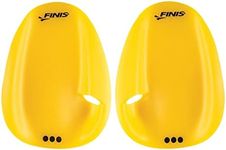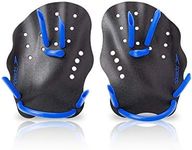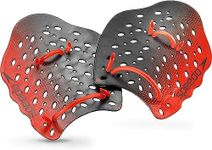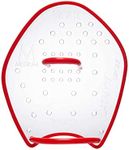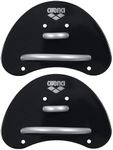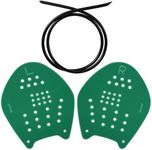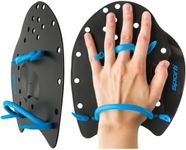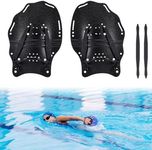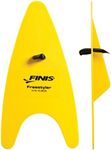Buying Guide for the Best Swim Paddles
Swim paddles are a great tool for swimmers looking to improve their technique, strength, and speed in the water. When choosing swim paddles, it's important to consider several key specifications to ensure you select the right pair for your needs. Understanding these specs will help you make an informed decision and get the most out of your swimming workouts.SizeThe size of swim paddles is crucial because it affects the amount of resistance you will experience in the water. Larger paddles provide more resistance, which can help build strength but may also increase the risk of shoulder strain if you're not used to them. Smaller paddles offer less resistance and are better for technique work and beginners. To pick the right size, consider your swimming experience and goals. If you're new to using paddles, start with a smaller size and gradually increase as you build strength and confidence.
ShapeSwim paddles come in various shapes, each designed to target different aspects of your stroke. Flat paddles are great for general strength training and improving overall technique. Contoured paddles, which mimic the shape of your hand, can help with specific stroke mechanics and provide a more natural feel. Finger paddles are smaller and focus on improving hand positioning and catch phase of the stroke. Choose a shape based on what aspect of your swimming you want to improve. If you're looking to enhance your overall stroke, flat paddles are a good choice. For more targeted technique work, consider contoured or finger paddles.
MaterialThe material of swim paddles can affect their durability and comfort. Most paddles are made from plastic, which is durable and provides good resistance. Some paddles have rubber edges or straps for added comfort and to prevent chafing. When choosing the material, consider how often you will use the paddles and your comfort preferences. If you plan to use them frequently, look for durable materials with comfortable features to ensure they last and are pleasant to use.
Strap TypeSwim paddles typically have straps to secure them to your hands. The type of strap can affect how secure and comfortable the paddles are. Adjustable straps allow for a customizable fit, which can be more comfortable and secure. Fixed straps are simpler but may not fit as well for everyone. Some paddles have no straps and rely on the swimmer's grip to hold them in place. Choose a strap type based on your comfort and preference. If you want a secure and customizable fit, adjustable straps are a good option. If you prefer simplicity, fixed straps or strapless paddles might be better.
VentilationVentilation refers to the holes or openings in the paddles that allow water to flow through. This can reduce resistance and make the paddles feel more natural in the water. Paddles with more ventilation are generally easier to use and can help with technique work, while those with less ventilation provide more resistance for strength training. Consider your goals when choosing ventilation. If you're focusing on technique and want a more natural feel, look for paddles with good ventilation. For strength training, paddles with less ventilation might be more effective.
